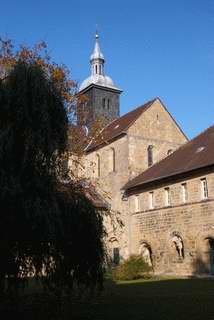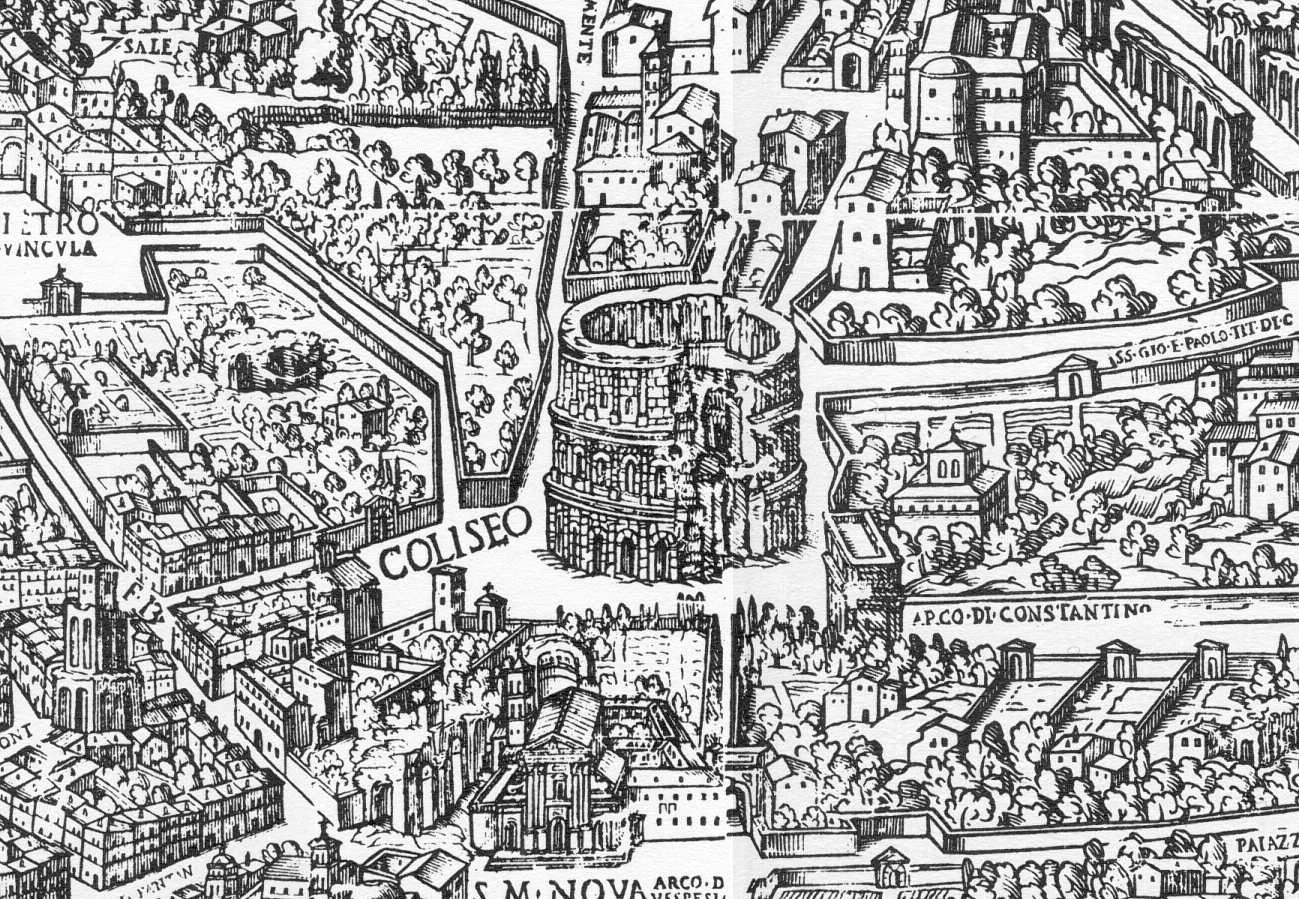|
Amelungsborn
Amelungsborn Abbey, also Amelunxborn Abbey (''Kloster Amelungsborn''), is a Lutheran monastery in Germany. It is located near Negenborn and Stadtoldendorf, in the ''Landkreis'' of Holzminden in the Weserbergland. It was the second oldest Cistercian foundation in Lower Saxony, Germany, after Walkenried Abbey. It survived the Reformation by becoming Lutheran, and with Loccum Abbey, also previously Cistercian, is one of the only two Lutheran monasteries in Germany with an uninterrupted tradition. The abbey church, St. Mary's, is also the parish church of the abbey's former estate villages Negenborn and Holenberg. Foundation The site of the ''villa Amelungsborn'' to the west of the present Stadtoldendorf was originally part of the ancestral lands of the Counts of Northeim. Siegfried IV, the last Count of Northeim-Boyneburg and HomburgGroße Baudenkmäler Heft 338 Kloster Amelungsborn, Verlag DONAU Druck 5. Auflage 1998, p. 2 gave the land at Amelungsborn for the foundation of a Ci ... [...More Info...] [...Related Items...] OR: [Wikipedia] [Google] [Baidu] |
Siegfried IV, Count Of Northeim-Boyneburg And Homburg
Siegfried IV was the last Count of Northeim-Boyneburg and Homburg.Große Baudenkmäler Heft 338 Kloster Amelungsborn, Verlag DONAU Druck 5. Auflage 1998, p. 2 He gave the land at Amelungsborn for the foundation (in the 12th century) of the future Amelungsborn Abbey, a Cistercian monastery, which was officially settled by a community of monks from Altenkamp Abbey. References 12th-century German nobility {{middleages-stub ... [...More Info...] [...Related Items...] OR: [Wikipedia] [Google] [Baidu] |
Altenkamp Abbey
Kamp Abbey (Kloster Kamp), also known as Altenkamp Abbey or Alt(en)feld Abbey (and in English formerly Camp Abbey) was the first Cistercian monastery founded in Germany, German territory, in the present town of Kamp-Lintfort in North Rhine-Westphalia. History It was founded in 1123 by List of bishops and archbishops of Cologne, Friedrich I, Archbishop of Cologne, and settled from Morimond Abbey. As the first Cistercian foundation in the region it attracted great endowments and became very wealthy and powerful. It was extremely active in the foundation of daughter houses: :In Germany: Walkenried Abbey (1129); Amelungsborn Abbey (c.1129); Volkenroda Abbey (1131); Hardehausen Abbey (1140); Michaelstein Abbey (1146); Saarn Abbey (1214); Neuenkamp Abbey (1231); Bottenbroich Abbey (1231); Burlo Abbey (1448); and Grevenbroich Abbey (1628); :In the Netherlands: Eiteren Abbey (1342); Mariënkroon Abbey(1382); and Sibculo Abbey (1412). Kamp was largely rebuilt in the 15th century but suf ... [...More Info...] [...Related Items...] OR: [Wikipedia] [Google] [Baidu] |
Bad Doberan
Bad Doberan () is a town in the district of Rostock, Mecklenburg-Vorpommern, Germany. It was the capital of the former district of Bad Doberan. In 2012, its population was 11,427. Geography Bad Doberan is situated just west of Rostock's city centre and is therefore part of one of the most developed regions in the north-eastern part of Germany. The town nestles between beautiful beech tree forests just 6 km from the Baltic Sea and is one of the earliest German settlements in Mecklenburg. Today the town is a very popular bathing resort, thanks to Heiligendamm, a district of Bad Doberan situated directly at the cliff line of the Baltic. Historically, Doberan used to be the summer residence for the Mecklenburg Dukes who resided in Schwerin, and for their entourage. Name The name Doberan, originally ''Dobran'', is a place name that probably derives from a Slavic Old Polabian personal name, meaning "good" (''dobry''). According to legend, the name Doberan originated when th ... [...More Info...] [...Related Items...] OR: [Wikipedia] [Google] [Baidu] |
Doberan Abbey
Doberan Abbey (''Kloster Doberan'') is a former Cistercian monastery in Bad Doberan, Mecklenburg-Vorpommern, Germany. The Brick Gothic church continues in use as Doberan Minster (''Doberaner Münster''). After the conversion to Christianity of the Wendish prince Pribislav, Doberan was the first monastery founded in Mecklenburg, in 1171, as a daughter house of Amelungsborn Abbey. The first community, at Althof, was massacred in 1179 in the unrest following the death of Pribislaw, and the abbey was re-founded in 1186 in Doberan. It quickly became a political, social and spiritual centre in the region. The abbey church, which continues in use as Doberan Minster (''Doberaner Münster''), is one of the most important Brick Gothic buildings in Mecklenburg-Vorpommern. Until the Reformation, during which it was secularised in 1552, the abbey possessed great estates, and was the burial place of the Princes of Mecklenburg. The premises were badly damaged in 1637 during the Thirty Years' ... [...More Info...] [...Related Items...] OR: [Wikipedia] [Google] [Baidu] |
Riddagshausen Abbey
Riddagshausen Abbey (german: Kloster Riddagshausen) was a Cistercian monastery just outside the city of Brunswick in Germany. History It was founded as Marienzelle by Ludolf the Wend, a '' ministerialis'' of Henry the Lion and steward of Brunswick, and settled in 1145 by monks from Amelungsborn Abbey. Henry endowed the new foundation in 1146 with the neighbouring village of Riddagshausen, from which it took its name.Klosterkirche Riddagshausen: history The abbey early acquired '''' status as an . It was ... [...More Info...] [...Related Items...] OR: [Wikipedia] [Google] [Baidu] |
Mariental Abbey
Mariental Abbey (german: Kloster Mariental), in the present-day municipality of Mariental in Lower Saxony, Germany, is a former Cistercian monastery founded in 1138, now used and owned by a Lutheran congregation of the Evangelical Lutheran Church in Brunswick. History The monastery was founded by Friedrich II von Sommerschenburg ( – 1162), Count palatine (''Pfalzgraf'') of Saxony. It then was a daughter house of Altenberg Abbey of the filiation of Morimond. The initial complement consisted of twelve monks from Altenberg under an abbot (Bodo) from Amelungsborn Abbey. The Augustinian nunnery of Marienberg in nearby Helmstedt was subsequently established in 1176. When the Sommerschenburg family became extinct in 1179, Mariental Abbey with its possessions were seized by the Welf duke Henry the Lion. The abbey soon achieved great prosperity: its estates extended as far as Magdeburg, Jüterbog and Braunschweig. In 1232 it established a daughter house of its own, . However, at the en ... [...More Info...] [...Related Items...] OR: [Wikipedia] [Google] [Baidu] |
Cistercian
The Cistercians, () officially the Order of Cistercians ( la, (Sacer) Ordo Cisterciensis, abbreviated as OCist or SOCist), are a Catholic religious order of monks and nuns that branched off from the Benedictines and follow the Rule of Saint Benedict, as well as the contributions of the highly-influential Saint Bernard of Clairvaux, known as the Latin Rule. They are also known as Bernardines, after Saint Bernard himself, or as White Monks, in reference to the colour of the "cuculla" or cowl (choir robe) worn by the Cistercians over their habits, as opposed to the black cowl worn by Benedictines. The term ''Cistercian'' derives from ''Cistercium,'' the Latin name for the locale of Cîteaux, near Dijon in eastern France. It was here that a group of Benedictine monks from the monastery of Molesme founded Cîteaux Abbey in 1098, with the goal of following more closely the Rule of Saint Benedict. The best known of them were Robert of Molesme, Alberic of Cîteaux and the English mon ... [...More Info...] [...Related Items...] OR: [Wikipedia] [Google] [Baidu] |
Braunschweig
Braunschweig () or Brunswick ( , from Low German ''Brunswiek'' , Braunschweig dialect: ''Bronswiek'') is a city in Lower Saxony, Germany, north of the Harz Mountains at the farthest navigable point of the river Oker, which connects it to the North Sea via the rivers Aller and Weser. In 2016, it had a population of 250,704. A powerful and influential centre of commerce in medieval Germany, Brunswick was a member of the Hanseatic League from the 13th until the 17th century. It was the capital city of three successive states: the Principality of Brunswick-Wolfenbüttel (1269–1432, 1754–1807, and 1813–1814), the Duchy of Brunswick (1814–1918), and the Free State of Brunswick (1918–1946). Today, Brunswick is the second-largest city in Lower Saxony and a major centre of scientific research and development. History Foundation and early history The date and circumstances of the town's foundation are unknown. Tradition maintains that Brunswick was created through ... [...More Info...] [...Related Items...] OR: [Wikipedia] [Google] [Baidu] |
Helmstedt
Helmstedt (; Eastphalian: ''Helmstidde'') is a town on the eastern edge of the German state of Lower Saxony. It is the capital of the District of Helmstedt. The historic university and Hanseatic city conserves an important monumental heritage of Romanesque and Renaissance buildings, as well as numerous timber framed houses. During the German partition the nearby Bundesautobahn 2 was the site of the Helmstedt–Marienborn border crossing, the most important on the former inner German border as starting point of the shortest land route between West Germany and West Berlin. Geography Helmstedt is situated in a basin between the Elm and Lappwald hill ranges, at the transition area between the northern foothills of the Harz mountains and the North German Plain. It is surrounded by the Elm-Lappwald Nature Park. The town centre is located about east of Braunschweig, west of Magdeburg, and east of the state capital Hanover. The municipal area includes the localities of Barm ... [...More Info...] [...Related Items...] OR: [Wikipedia] [Google] [Baidu] |
List Of Bishops Of Hildesheim
This list records the incumbents of the Roman Catholic Diocese of Hildesheim (german: link=no, Bistum Hildesheim). Between 1235 and 1803 the bishops simultaneously officiating as rulers of princely rank (prince-bishop) in the Prince-Bishopric of Hildesheim (german: link=no, Hochstift Hildesheim), a state of imperial immediacy within the Holy Roman Empire. Hildesheim is the seat of the bishops and the cathedral chapter. Titles of the incumbents of the Hildesheim See Between 1235 and 1803 the elected and papally confirmed bishops of the Hildesheim See were additionally imperially invested princely power as prince-bishops. In 1235 part of the Hildesheim diocesan territory, the episcopal and capitular temporalities (Stift) were disentangled from the Duchy of Brunswick and Lunenburg and became an own territory of imperial immediacy called Prince-Bishopric of Brunswick and Lunenburg (german: link=no, Hochstift Hildesheim), a vassal of the Holy Roman Empire. The prince-bishopric w ... [...More Info...] [...Related Items...] OR: [Wikipedia] [Google] [Baidu] |
Pope Honorius II
Pope Honorius II (9 February 1060 – 13 February 1130), born Lamberto Scannabecchi,Levillain, pg. 731 was head of the Catholic Church and ruler of the Papal States from 21 December 1124 to his death in 1130. Although from a humble background, his obvious intellect and outstanding abilities saw him promoted up through the ecclesiastical hierarchy. Attached to the Frangipani family of Rome, his election as pope was contested by a rival candidate, Celestine II, and force was used to guarantee his election. Honorius's pontificate was concerned with ensuring that the privileges the Roman Catholic Church had obtained through the Concordat of Worms were preserved and, if possible, extended. He was the first pope to confirm the election of the Holy Roman emperor. Distrustful of the traditional Benedictine order, he favoured new monastic orders, such as the Augustinians and the Cistercians, and sought to exercise more control over the larger monastic centres of Monte Cassino and ... [...More Info...] [...Related Items...] OR: [Wikipedia] [Google] [Baidu] |
Burg Homburg
Stadtoldendorf is a town in the center of the Holzminden district, Lower Saxony, Germany. Stadtoldendorf is the seat of the ''Samtgemeinde'' ("collective municipality") Eschershausen-Stadtoldendorf. Government Allocation of seats in the local council electoral period 2006-2011: * CDU: 10 * SPD: 5 * Grünen: 1 * FDP: 1 Culture Museums * Stadtmuseum im Charlotte-Leitzen-Haus * Freilichtmuseum Mühlenanger Buildings * Försterbergturm, from the 13th century * Hagentorturm * Kellbergturm * Homburg castle, above old village * Altes Rathaus (from 1875) * Ratskeller (from 1621) * Charlotte-Leitzen-Haus Notable people * Kurt Matzdorf Kurt J. Matzdorf, also known as Kurtheinz J. Matzdorf (1922 – 2008), was a German-born American jewelry designer, metalsmith (which included silversmith, goldsmith) and an educator. He was Professor Emeritus at State University of New York at ... (1922 – 2008), metalsmith, professor References Towns in Lower Saxony Holzmind ... [...More Info...] [...Related Items...] OR: [Wikipedia] [Google] [Baidu] |






